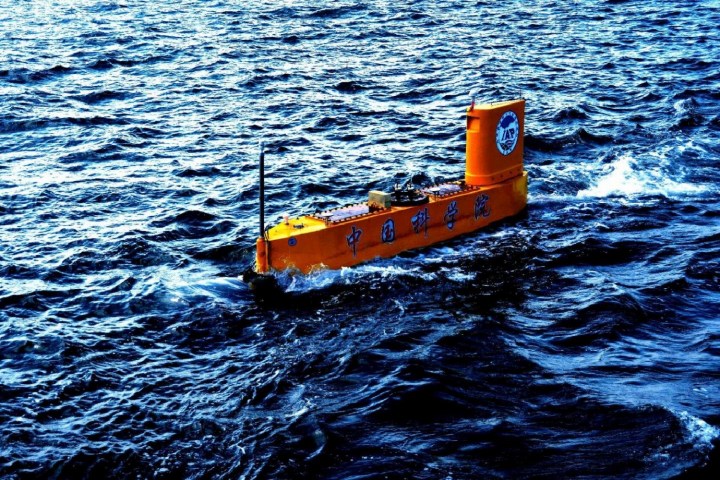
It might sound like something out of a techno-thriller, but it’s not: Scientists in China really have developed an unmanned submarine that is designed to travel into potentially deadly typhoons and other extreme weather types and fire off weather-monitoring rockets.
One of these “rocketsondes,” designed to perform weather analysis in situations that would prove challenging for weather balloons or human observers, was recently launched as a demo. The rockets contain instruments for recording accurate meteorological measurements at heights of up to 26,000 feet and then transmitting them to people on the ground using radio. The result of the test launch was described in a research paper published in the journal Advances in Atmospheric Sciences.
“The unmanned semi-submersible vehicle is an ideal platform for marine meteorological environmental monitoring, and the atmospheric profile information provided by rocketsonde launched from this platform can improve the accuracy of numerical weather forecasts at sea and in coastal zones,” study co-author Jun Li, a researcher at the Institute of Atmospheric Physics, Chinese Academy of Sciences, said in a statement. “Similar to Argo (the broad-scale global array of profiling floats that measures temperature/salinity in the ocean) which provides profiles of Thermohaline current, rocketsonde can provide profiles of atmospheric temperature, humidity, pressure and wind observations.”
This isn’t the first time that China has explored the possibilities posed by autonomous subs. Several years ago it was reported that the country was testing a fleet of advanced underwater drones with potential military applications in the South China Sea. These “sea wings” drones were reported to be capable of instantly relaying underwater data to the Chinese military. (Don’t worry if you’re concerned the United States is being left behind, though: The U.S. Navy has also actively investigated the potential of self-driving seagoing vessels.)
According to the creators of China’s latest meteorological rocket-firing drone sub, the hope is that it will be possible to provide more accurate weather readings during severe sea conditions in a way that’s both technically feasible and affordable. They are also busy developing a new generation of similar subs, capable of gathering even more useful data. This will include information such as water temperature, current velocity, and wave height and direction.


